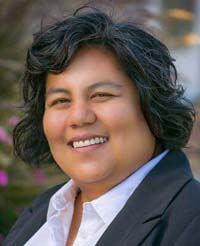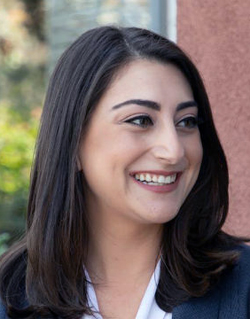Subjects in this column
*Handicapping the race for Susan Davis’s Congressional Seat
*Proposed Ethnic Studies Model Curriculum Brings Heat, Not Light
* Too Many Jewish Offerings to Attend Everything
Handicapping the race for Susan Davis’s Congressional Seat


SAN DIEGO – In advance of the announcement Saturday when San Diego City Council President Georgette Gomez will say whether she plans to run for the seat of retiring Congresswoman Susan Davis (D-San Diego), San Diego Union-Tribune columnist Michael Smolens has offered some acute analysis of the race.
In this morning’ edition, Smolens noted that Davis’s district is so strongly Democratic, it’s considered a safe bet that it will be won by one of the Democrats contesting for it. Therefore, he suggests, national political organizations that want to assure a Democratic majority in the House of Representatives are not likely to invest too much money in that district. Instead, he suggests, they will put their money into toss-up districts in an effort to build an even greater majority than the Democrats have now.

What this means, Smolens suggests, is that when it comes to fundraising the advantage goes to independently wealthy Sara Jacobs, granddaughter of Qualcomm co-founder Irwin Jacobs, who in 2016 spent more than $2 million in personal funds in an unsuccessful, but close, effort in the 49th Congressional District from which then Congressman Darryl Issa retired.
During the administration of President Barack Obama, Jacobs had served in the U.S. State Department, so it’s likely in any debate on foreign policy, it will be to Jacobs’ advantage to draw upon that background.
Now a candidate in Davis’s 53rd Congressional District, Jacobs may have two important disadvantages, according to Smolens’ report. The first is that she is open to the charge of district-shopping, becoming a candidate not because of any affinity for constituents in that district but because she is politically ambitious. The second is that she is seen as a moderate in a district that may prefer a progressive Democrat like Gomez.
In announcing that she would be making an announcement at 9:30 a.m. Saturday, at the United Domestic Workers Union at 4855 Seminole Drive, Gomez sent out an ambiguous news release that one could consider either a campaign teaser or justification for remaining in the position she currently holds.
It began: “As San Diego Council President and Chair of the Metropolitan Transit System, Georgette Gómez is building a fairer, greener, more inclusive San Diego where no community is left behind. Georgette’s legislative accomplishments include writing San Diego’s first-ever Housing Action Plan, strengthening protections for low-income tenants in public housing, passing the city’s historic Welcoming Immigrants Strategic Plan, and leading implementation of San Diego’s landmark Climate Action Plan and transition to 100% renewable energy by 2035.”
Her release continued: “In 2016, Georgette Gómez made history as the first LGBTQ Latina elected to the San Diego City Council. On the Council, Georgette represents the urban communities of central San Diego and, as Chair of the Transit System, she oversees public transit in a 570-square mile service area with approximately 3 million residents.
“A longtime community organizer, Georgette was associate director of the Environmental Health Coalition for 12 years, where she advocated for stricter laws to protect kids from toxins and keep polluting industries out of residential neighborhoods.
“Georgette grew up in San Diego’s Barrio Logan community to working class immigrant parents. A graduate of San Diego State, Georgette lives in City Heights with her partner Raquel Pacheco.”
The question that came immediately to my mind while reading Gomez’ statement was “why give up the ability to be a major influencer of public policy at the local level to become one of 435 members of Congress?”
We’ll find out on Saturday.
*
Proposed Ethnic Studies Model Curriculum Brings Heat, Not Light
Another journalist whom I admire, Marsha Sutton, recently wrote an in-depth piece for the Del Mar Times about the controversy engendered by California’s Instructional Quality Commission (IQC) in attempting to carry out a mandate from the Legislature to propose a curriculum for ethnic studies in high school.
We’ve reported in this publication how the Jewish community was up in arms about the proposed curriculum’s failure to address anti-Semitism nor to mention anything about the contributions that Jews have made to the building of California. Additionally, there were strenuous objections made to including the rhetoric of the anti-Israel Boycott, Divestment and Sanctions (BDS) movement in the model curriculum.
Our people were not alone in condemning the IQC’s flawed efforts. According to Sutton, protests also were made by “groups representing Hellenic, Armenian, Hindu, Korean, Greek and other races, religions, cultures and nationalities.”
The upshot is that legislation that would have enacted the model curriculum is now being held in the Appropriations Committee of the State Senate, where it’s likely to stay until the curriculum gets a dramatic rewrite that fulfills the original legislative intent of promoting diversity, inclusion, and inter-group harmony.
Commented Sutton: “With so many groups feeling that their particular heritage has been neglected or misrepresented in the draft curriculum, the state is in a pickle.”
*
Too Many Jewish Offerings to Attend Everything
One of the advantages of living in a small Jewish community is that organizations tend to coordinate calendars with each other so that events don’t compete for the same small set of congregants. It’s not only to the benefit of the organizations, it is also to the advantage of those congregants who would like to take advantage of every Jewish activity that they can.
There was a time in San Diego’s Jewish history when there was such coordination of calendars, but today that is just a memory. Not only are there conflicting activities in the six different Jewish regions of San Diego County, but even inside each of those six regions.
A case in point comes on Sunday, September 15th. At the Chabad of University City at 7:30 p.m., Rabbi Manis Friedman, dean of the Bais Chana Institute of Jewish Studies, which offers in-depth classes for women, will address the topic, “Is Religion Good for the World?”
Only a few miles away at Congregation Adat Yeshurun in La Jolla, Rabbi Dr. Meir Soloveichik of Yeshiva University will deliver at 6:30 p.m. the Stacy Lynn Pariser Memorial Lecture, “Rembrandt and the Rabbis: Why We Bless Our Children on Erev Yom Kippur.”
No one can attend both in entirety. Tickets for Rabbi Soloveichik’s lecture are $20 general admission and $10 for students, while tickets for Rabbi Friedman’s lecture are $15 at the door or $10 in advance.
The six Jewish regions of San Diego County, from south to north are: 1) The border area; 2) Metropolitan San Diego, including downtown, Mission Valley and Kearny Mesa; 3) San Diego State University-Del Cerro-San Carlos; 4) La Jolla and University City; 5) North County Coastal along the I-5; 6) North County Inland along the I-15.
*
Harrison is editor of San Diego Jewish World He may be contacted via donald.harrison@sdjewishworld.com